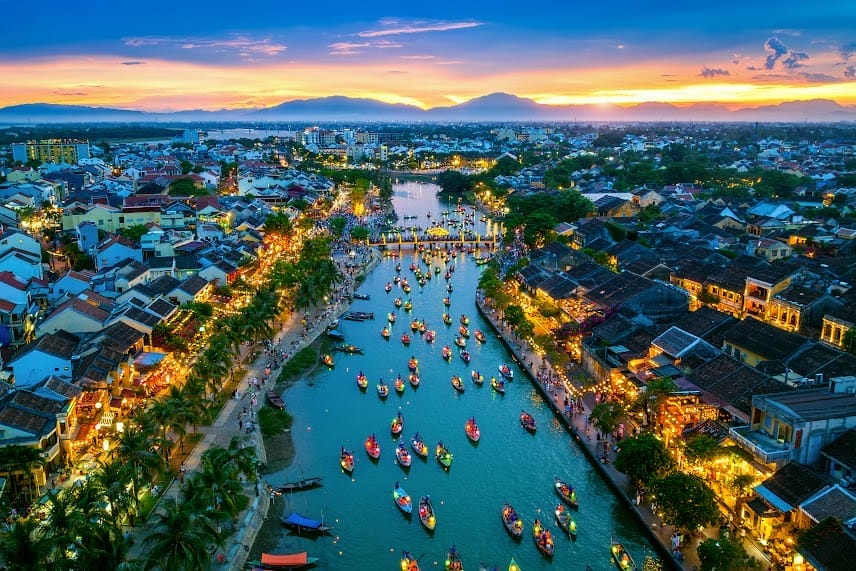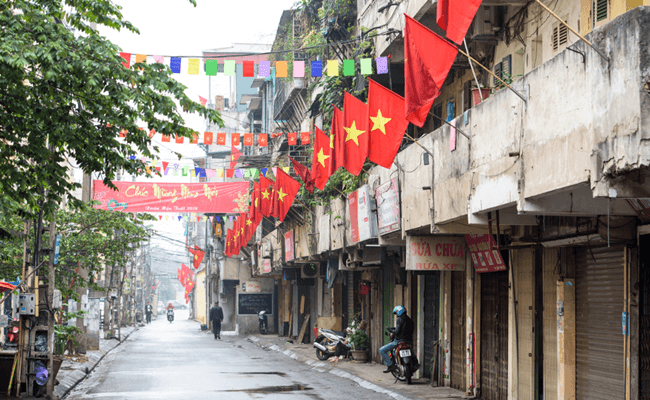The Nui Ong Nature Reserve is located North West of Phan Thiet in Thanh Linh district. The nature reserve is centered around Ong mountain (1,302 m). The Bien Lac sub-area is centered around Bien Lac lake in the west of the nature reserve. Streams originating in the north of the nature reserve feed the La Nga river (where Bien Lac Lake also drains), which is a tributary of the Dong Nai river. Streams originating in the south of the nature reserve feed the Phan and Cai rivers, which flow south, into the sea.
Nui Ong Nature Reserve supports 23,194 ha of forest, (91% of the total area of the reserve). The major vegetation types at the nature reserve are evergreen forest, semi-evergreen forest and deciduous forest. The most common forest type is lowland evergreen. Areas that have been heavily disturbed by logging contain semi-evergreen forest, dominated by species in the Dipterocarpaceae family. There is also a small area of primary lowland deciduous forest in the far south-east of the nature reserve. Lower montane evergreen forest is found at higher altitudes, and elfin forest at the highest elevations around the summit of Nui Ong. There are also areas of scrub, grassland and scrub with scattered trees at lower elevations.
There are at least 332 species of vascular plants in the nature reserve, including globally threatened species, such as Afzelia xylocarpa, Dalbergia bariensis and Pterocarpus macrocarpus. There are at least 52 species of mammals, 96 species of birds, 21 species of reptiles, 7 species of amphibians and 22 species of fish documented in the reserve. These include globally threatened species, such as Siamese Fireback Pheasant Lophura diardi, Black-shanked Douc Langur Pygathrix nigripes and Yellow-Cheeked Crested Gibbon Hylobates gabriellae (the latter two are primates).
There are 15,239 people living within the boundary of Bien Lac-Nui Ong Nature Reserve, and an additional 54,747 people live in the buffer zone. These people belong to the Kinh, K’ho, Cham, Rai and Ra-glai ethnic groups and practice a mixture of wet rice and shifting cultivation. Inside the nature reserve, there are 1,229 ha of wet rice land, 212 ha of shifting cultivation and 310 ha of industrial crop land. Corn is grown extensively in the surrounding areas.
In the past, one of the main conservation issues at Bien Lac-Nui Ong Nature Reserve (which received international attention) was the presence of a group of wild elephants. It has been said that in neighboring Dong Nai province, a group of 60 or so elephants known as the Tanh Linh Herd once regularly moved between the Tan Phu forest, crossing the La Nga (Ivory) River, and Binh Thuan province. In April 1999, these elephants moved to the area from Tan Phu Forest Enterprise, where they had been living previously. With extensive loss of habitat and food sources, the elephants began to raid village and crop land. They were particularly attracted to salt and ashes from bamboo fires. The villagers responded aggressively to force the elephants out, but this only enraged the animals and lead to violent clashes with the villagers. Since 1995, this group of elephants was responsible for the deaths of at least 15 people in the Tan Phu, Tanh Linh and Bien Lac-Nui Ong areas. Some 3,000 villagers were resettled during an effort to bring the situation under control. Early attempts to capture the animals failed, and scattered most of them and killed others in the process. Eventually six elephants in Tanh Linh Forest were tamed in 2001 and released into Yok Don National Park in the central highlands province of Dac Lac.
The reserve may be reached by small, unpaved country roads, and may be difficult to traverse during rainy season. There is no tourism infrastructure at the nature reserve and there are currently no organized tours. This is a �make your own adventure� but well worth the effort. The reserve lies about 1 hour and 30 minutes from Mui Ne.






